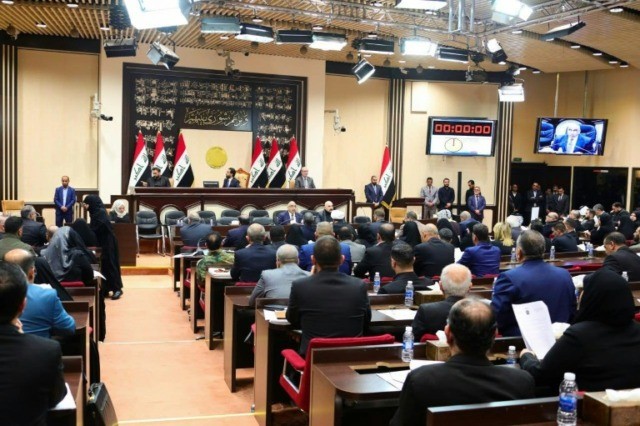Washington (AFP) – The US military could face its second forced exit from Iraq in a decade after the parliament in Baghdad voted on Sunday in support of the expulsion of American forces.
The Iraqi parliament held an extraordinary session after the killing of Qasem Soleimani, the Iranian Islamic Revolutionary Guards leader who wielded influence in Iraqi politics and was popular among the majority Shiites.
But the risk of withdrawal could be high: the US pullout in 2011 left a security vacuum that allowed the rise of the Islamic State jihadist group — and led to the US military’s return.
– SOFA cushion –
The US invasion in 2003 to overthrow Saddam Hussein’s regime and subsequent occupation did not require Iraq’s agreement. US troop numbers hit a peak of about 170,000 in 2007.
In 2008, then-president George Bush negotiated a Status of Forces Agreement (SOFA) with the Baghdad administration that would permit US troops’ presence until 2011, at which time they would leave.
In 2009 President Barack Obama sought a new SOFA that would allow several thousand to remain after 2011 to help Baghdad deal with continuing security problems, especially from extremist groups.
But Baghdad rejected US demands that American troops be given immunity from prosecution in Iraqi courts, and the new SOFA talks failed. On December 8, 2011, the last US troops departed Iraq.
– US troops return –
As US troops left, the Islamic State group rose — violent Sunni jihadists who seized control of territory in Iraq and Syria for their extremist “caliphate.”
The Iraqi military were no match, and by early 2014 Baghdad was asking the US for help, especially airstrikes to support their troops.
After IS seized Mosul in June 2014, Baghdad made a formal request. Obama authorized 275 US military personnel back to Iraq, and the Pentagon began regular air strikes to support Iraqi forces.
By August the Iraqis “invited” the US and coalition allies to send troops, giving birth to the Pentagon-led Operation Inherent Resolve and the Combined Joint Task Force, which provided air support as well as arms, training and tactical backup.
With no SOFA governing their presence, US troop numbers in Iraq rose to over 5,000 by 2017, when the fight against IS neared its peak.
– After IS defeat –
President Donald Trump was elected on promises to end US military engagement in the Middle East, a position opposed by the Pentagon.
In December 2018 he declared a total withdrawal from Syria, a move which precipitated the resignation of then-Defense Secretary Jim Mattis.
But in early 2019, weeks before the formal defeat of IS was announced that May, Trump suggested some US troops could stay in Iraq in order to monitor Iran.
That outraged many in Iraq, with politicians in most parties and factions demanding the US leave.
Still, the Pentagon has wanted to maintain a presence of several thousand troops to avert an IS resurgence, thousands of whose fighters disappeared back into Iraqi society.
Around 5,200 remained through the year, increased last week when a few hundred more were deployed to reinforce embassy security.

COMMENTS
Please let us know if you're having issues with commenting.